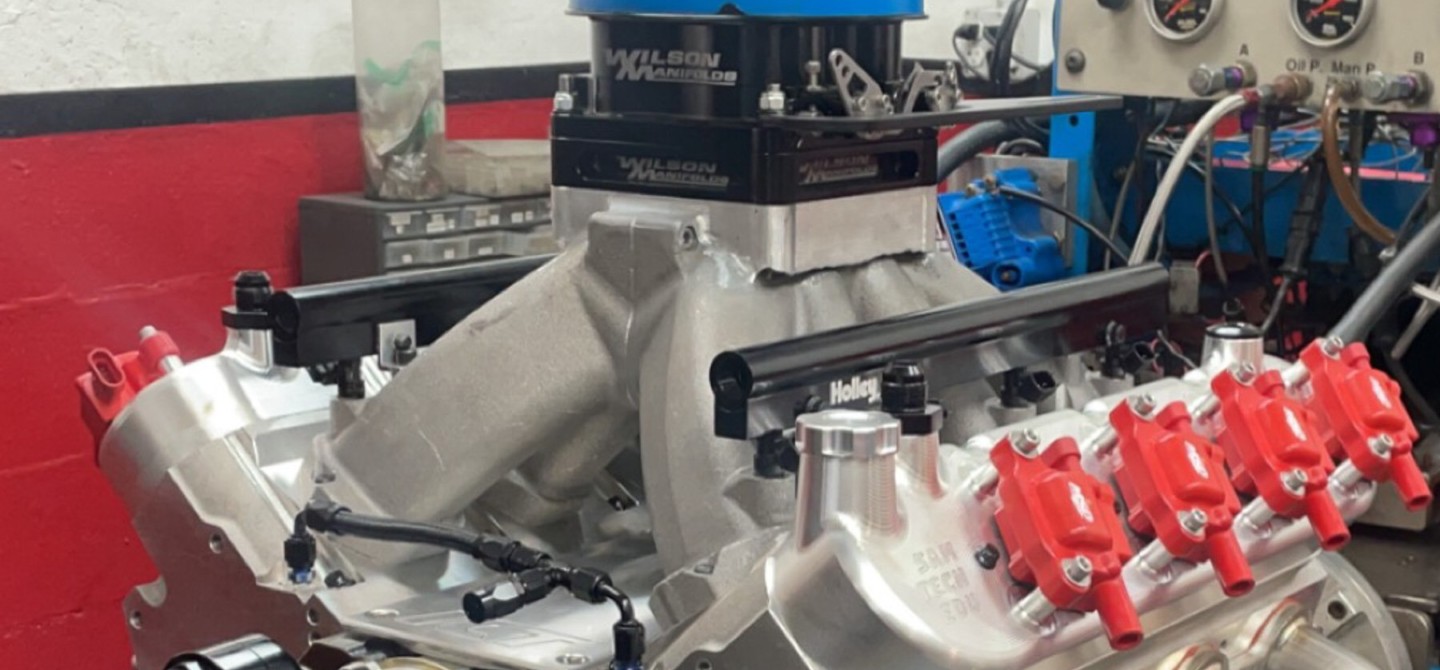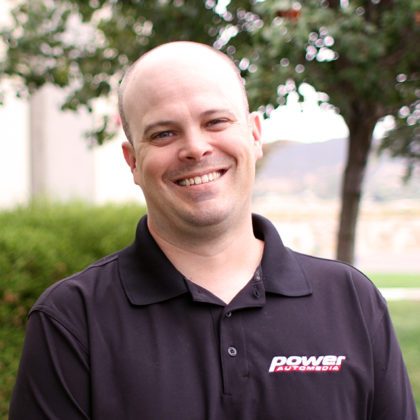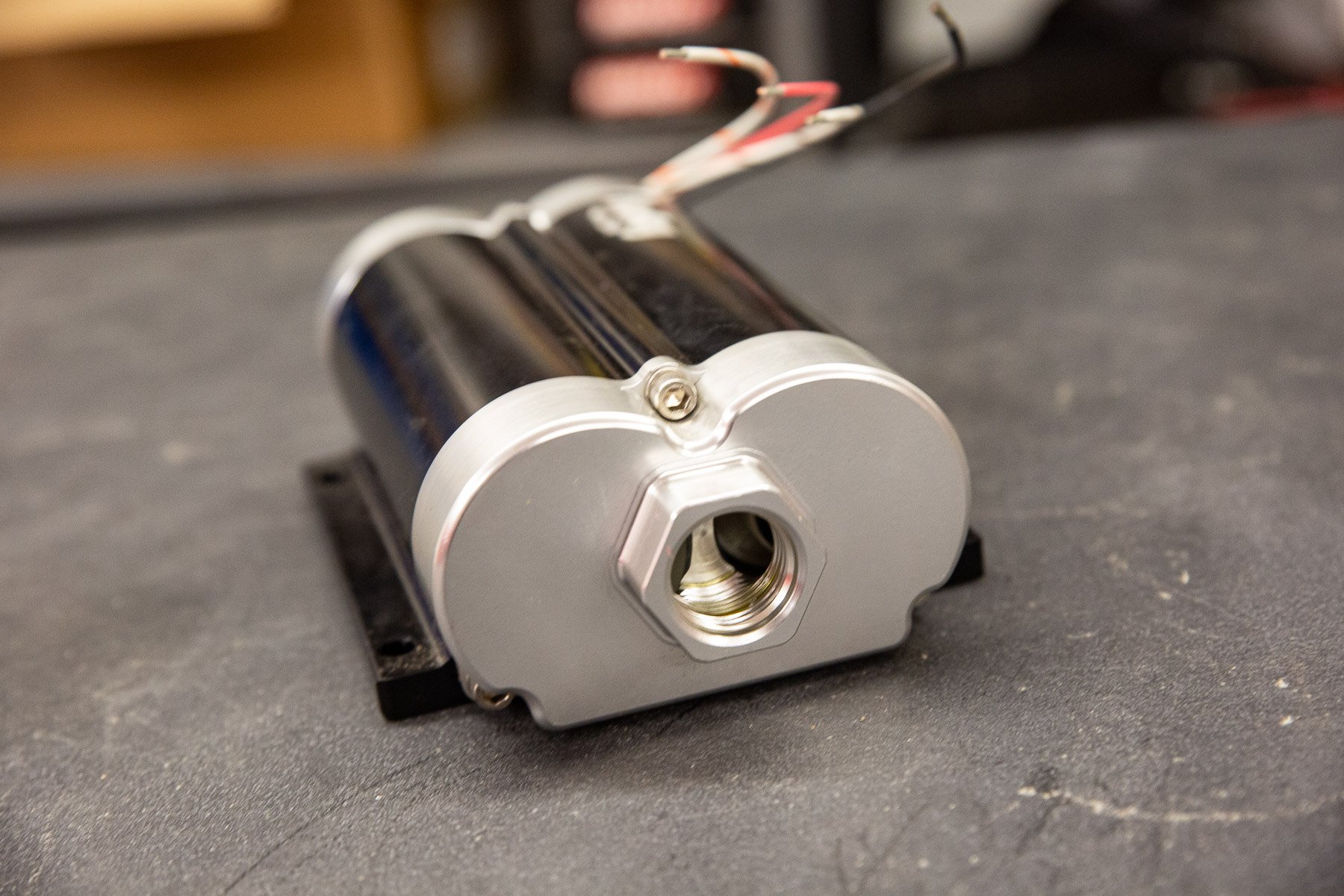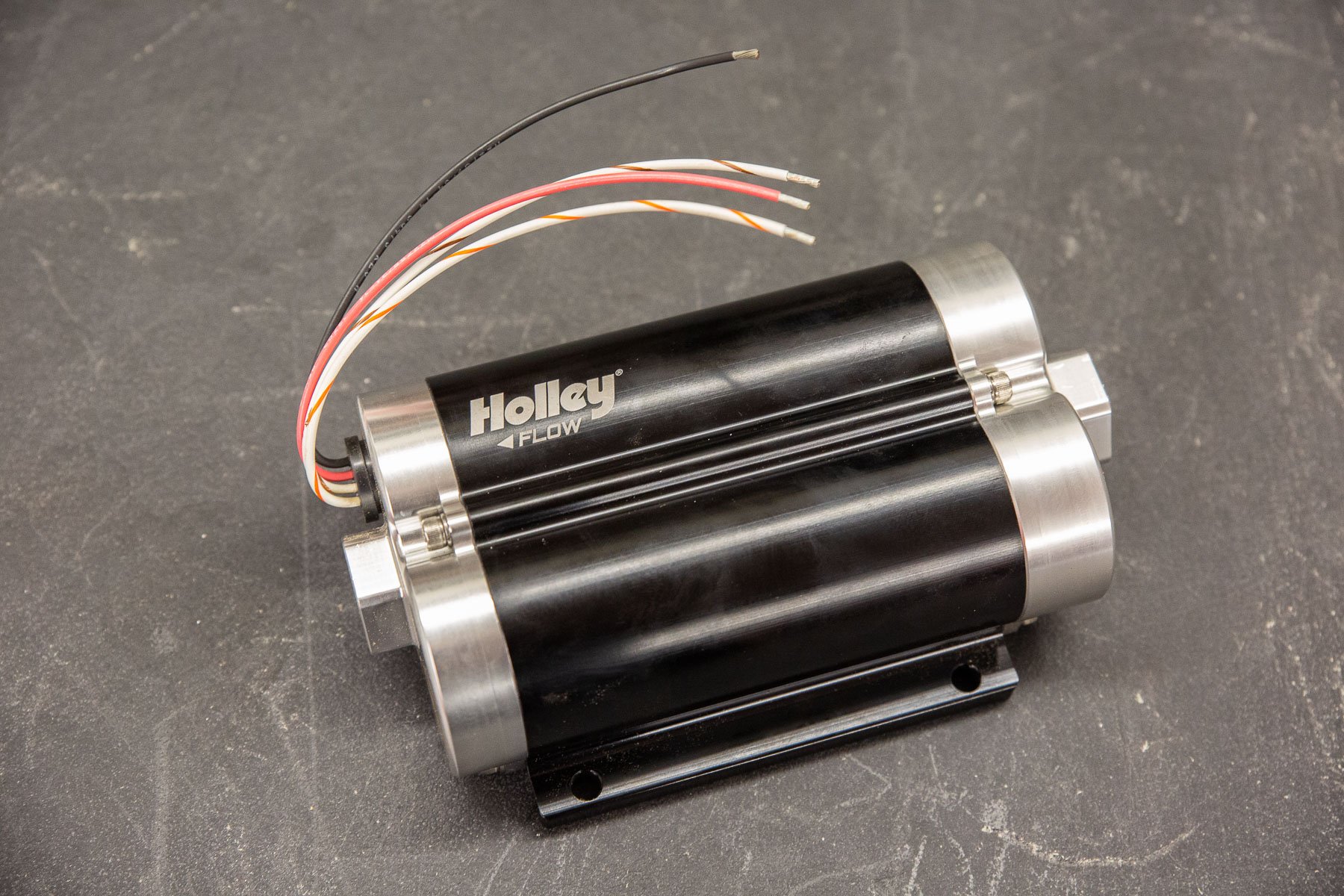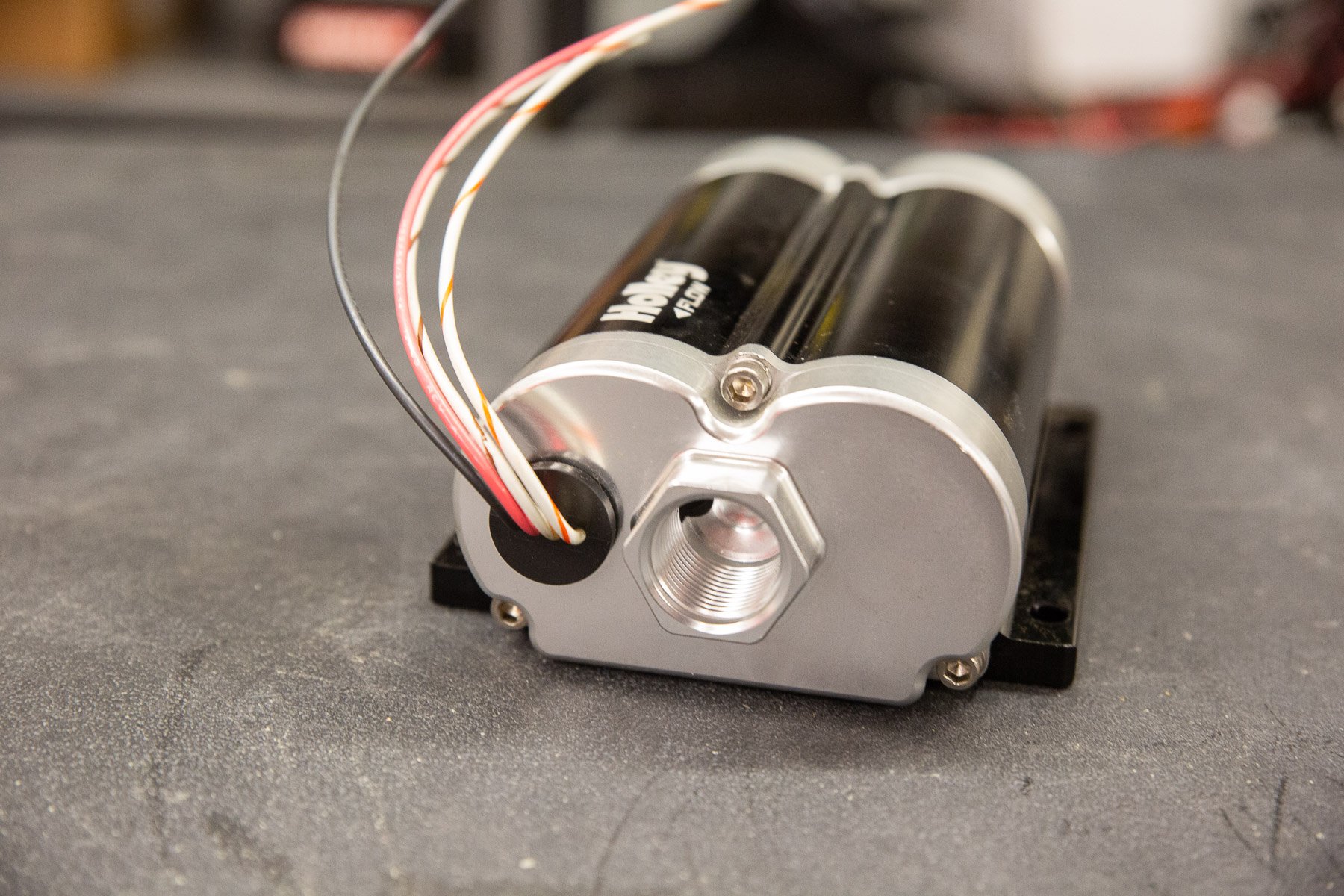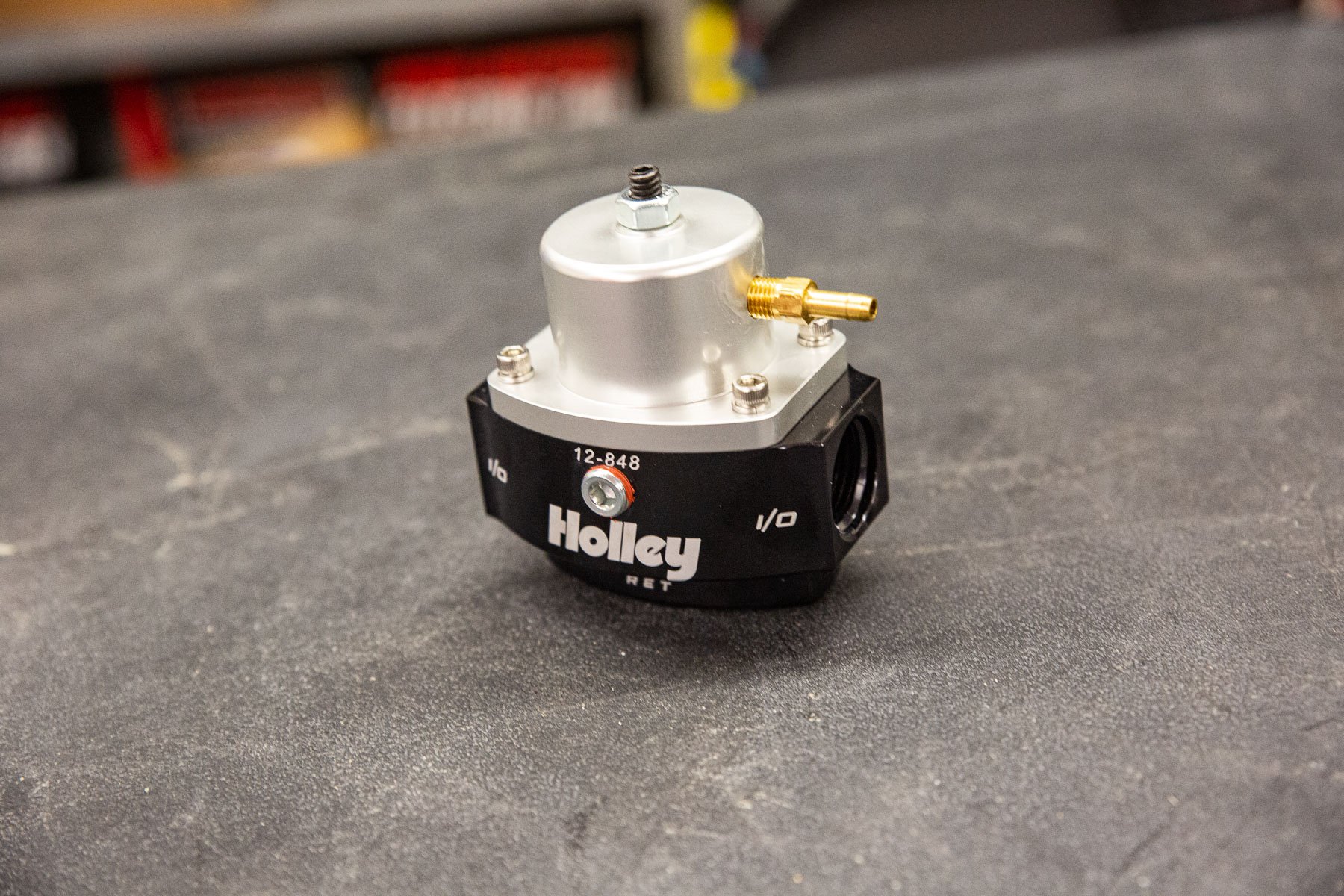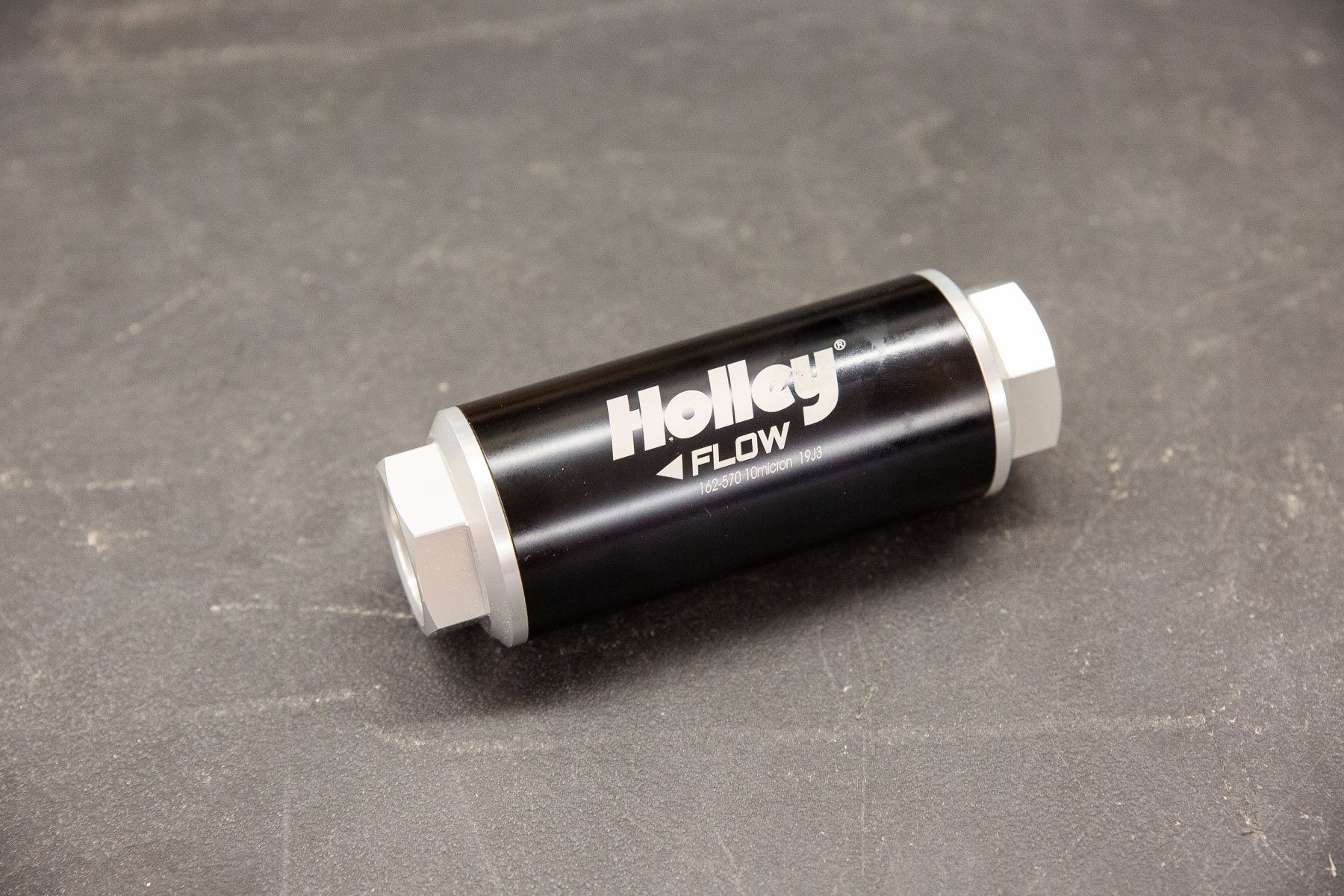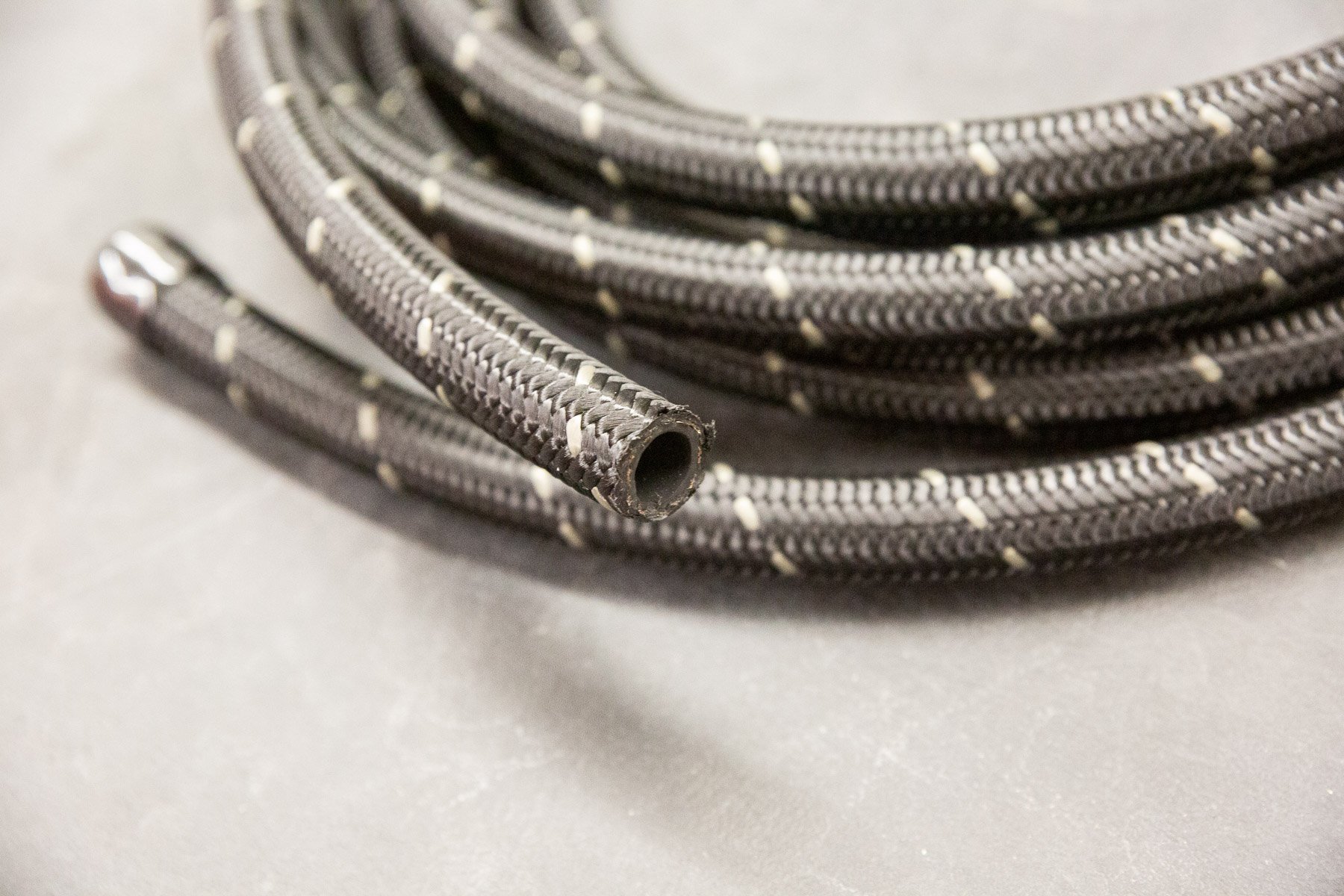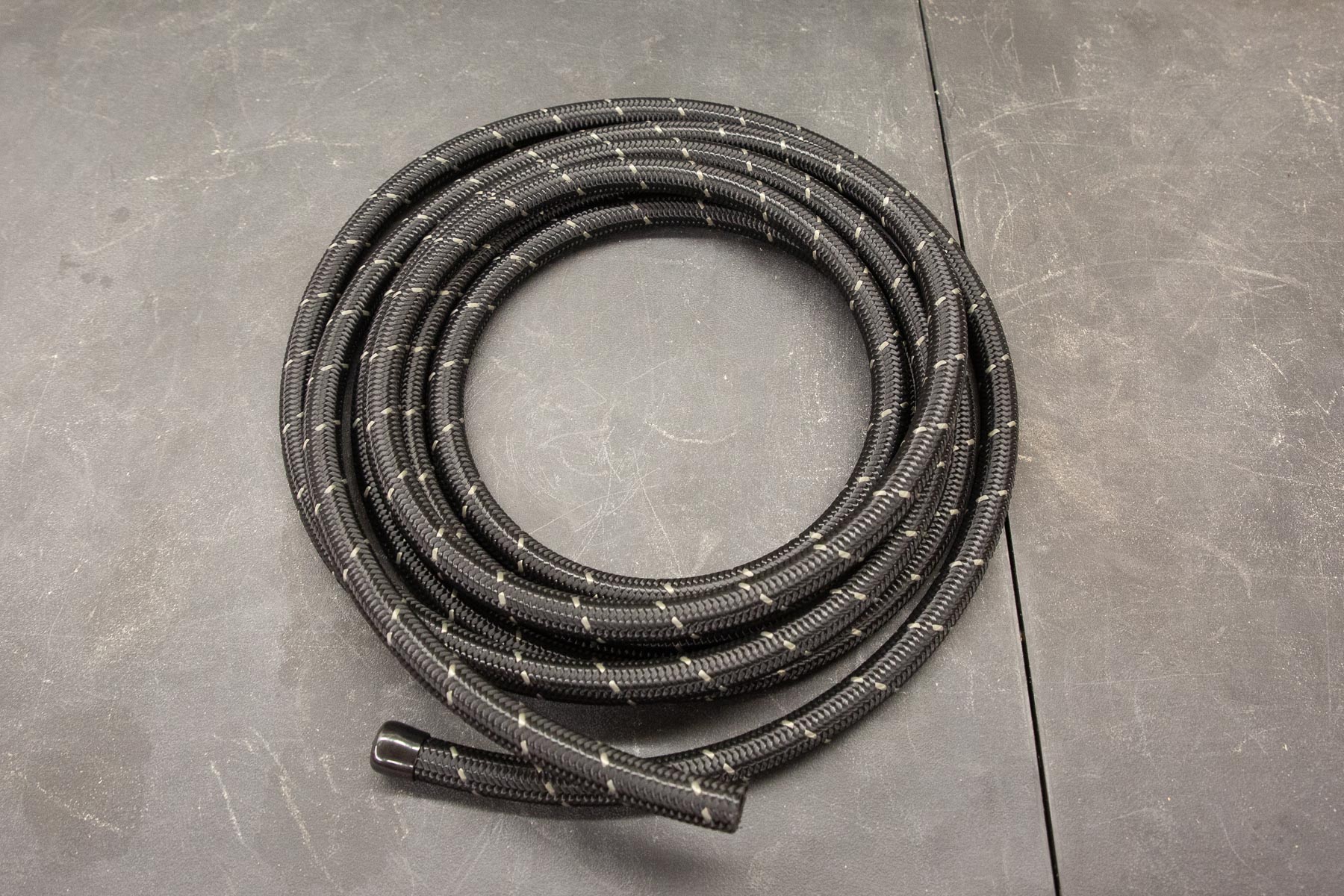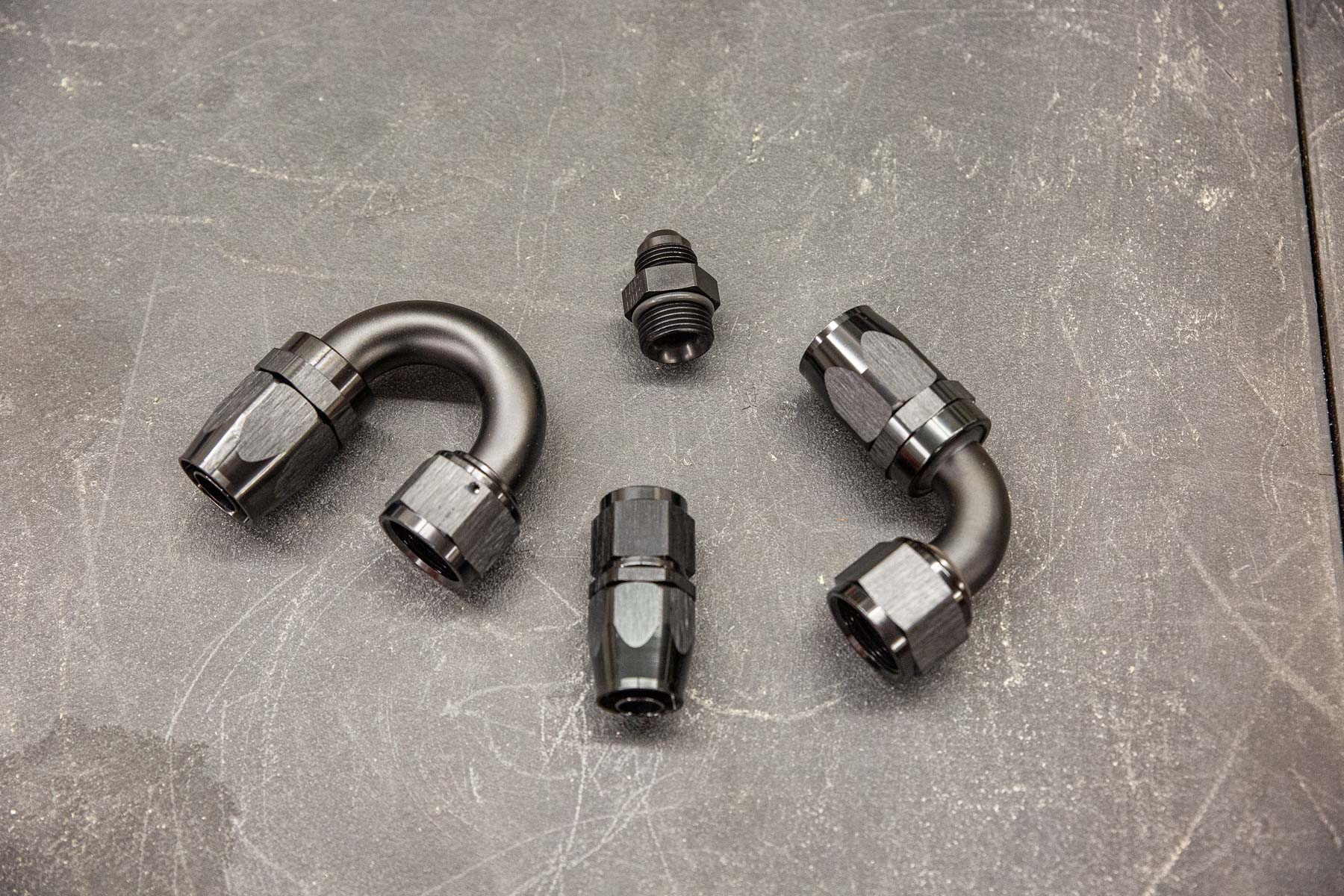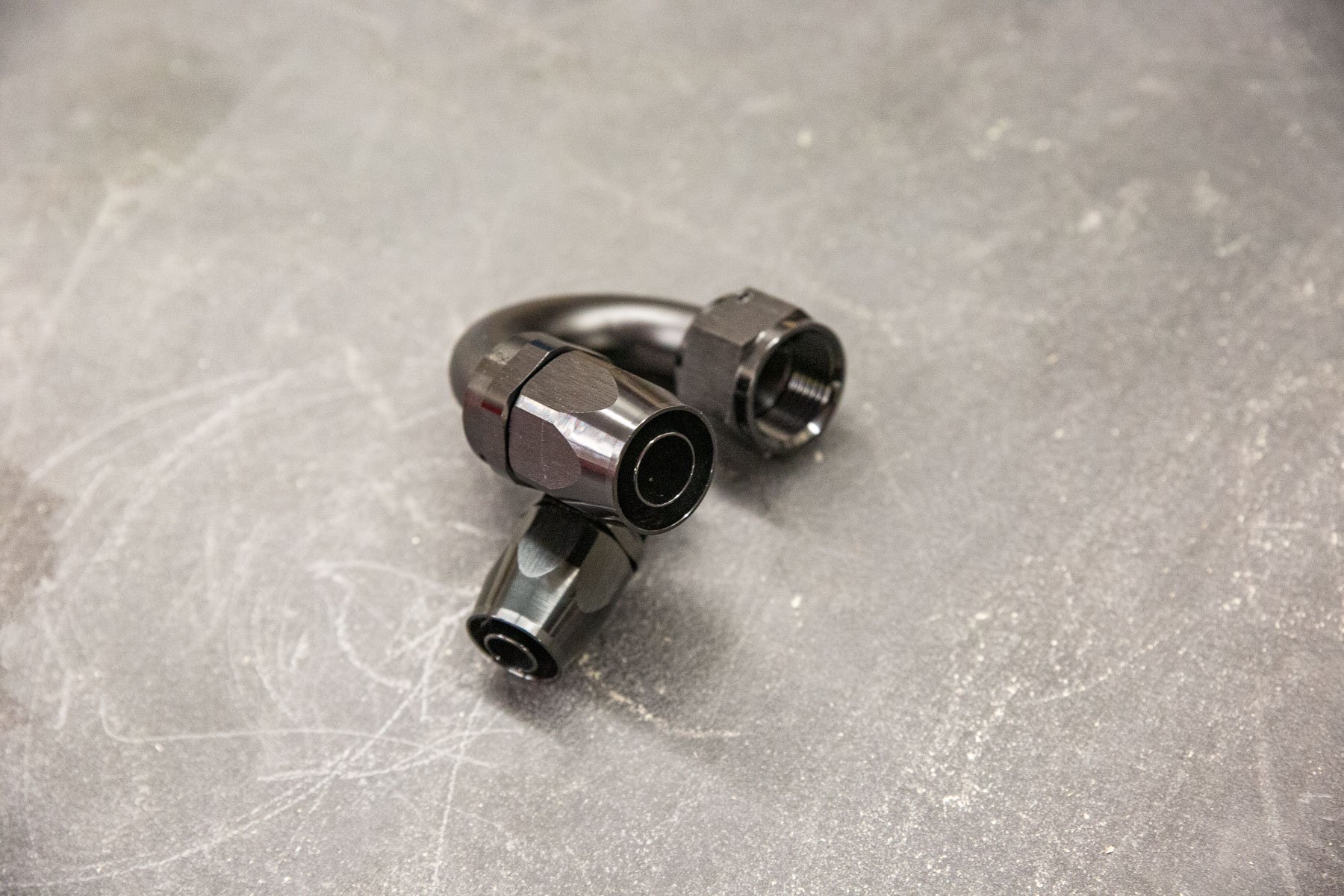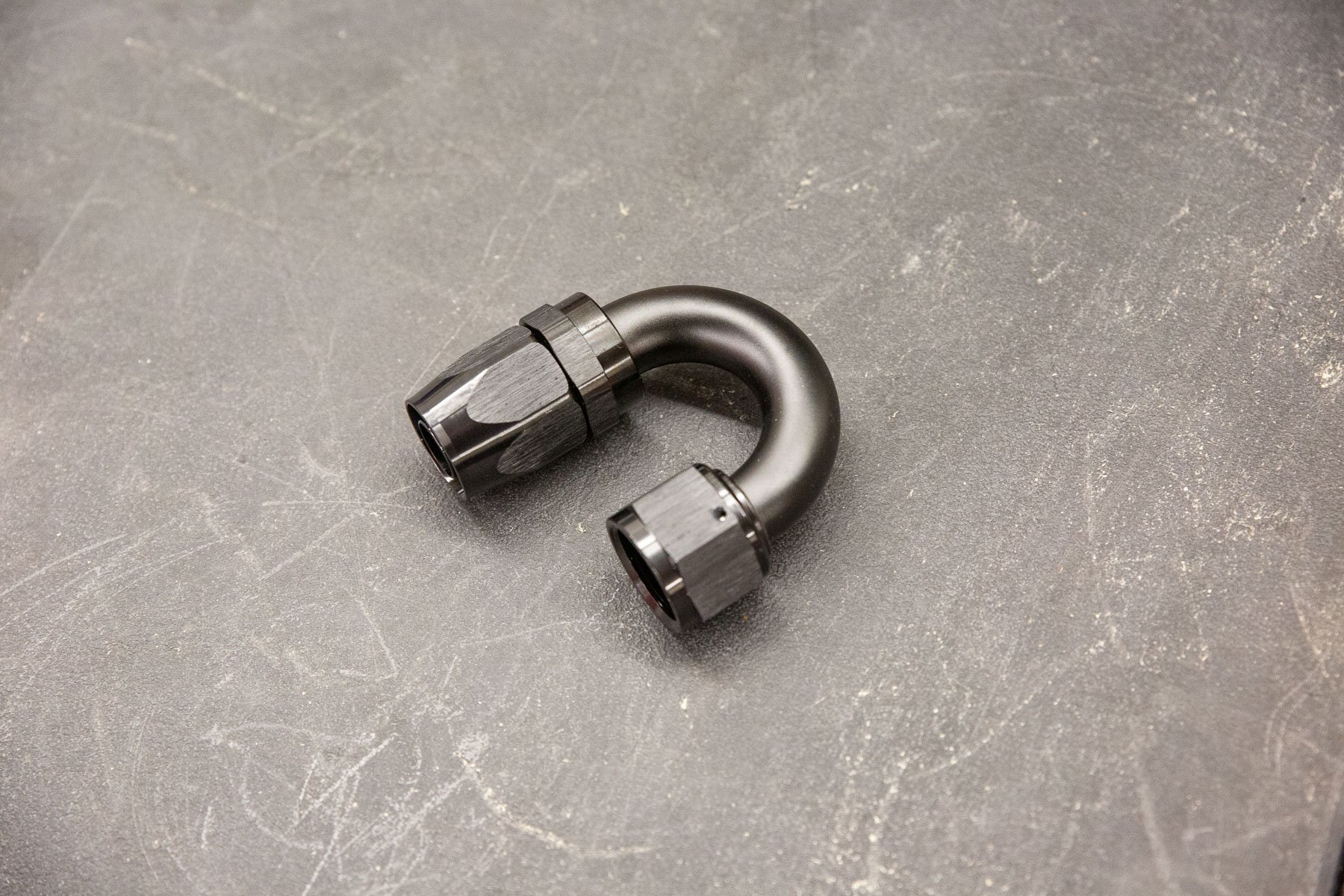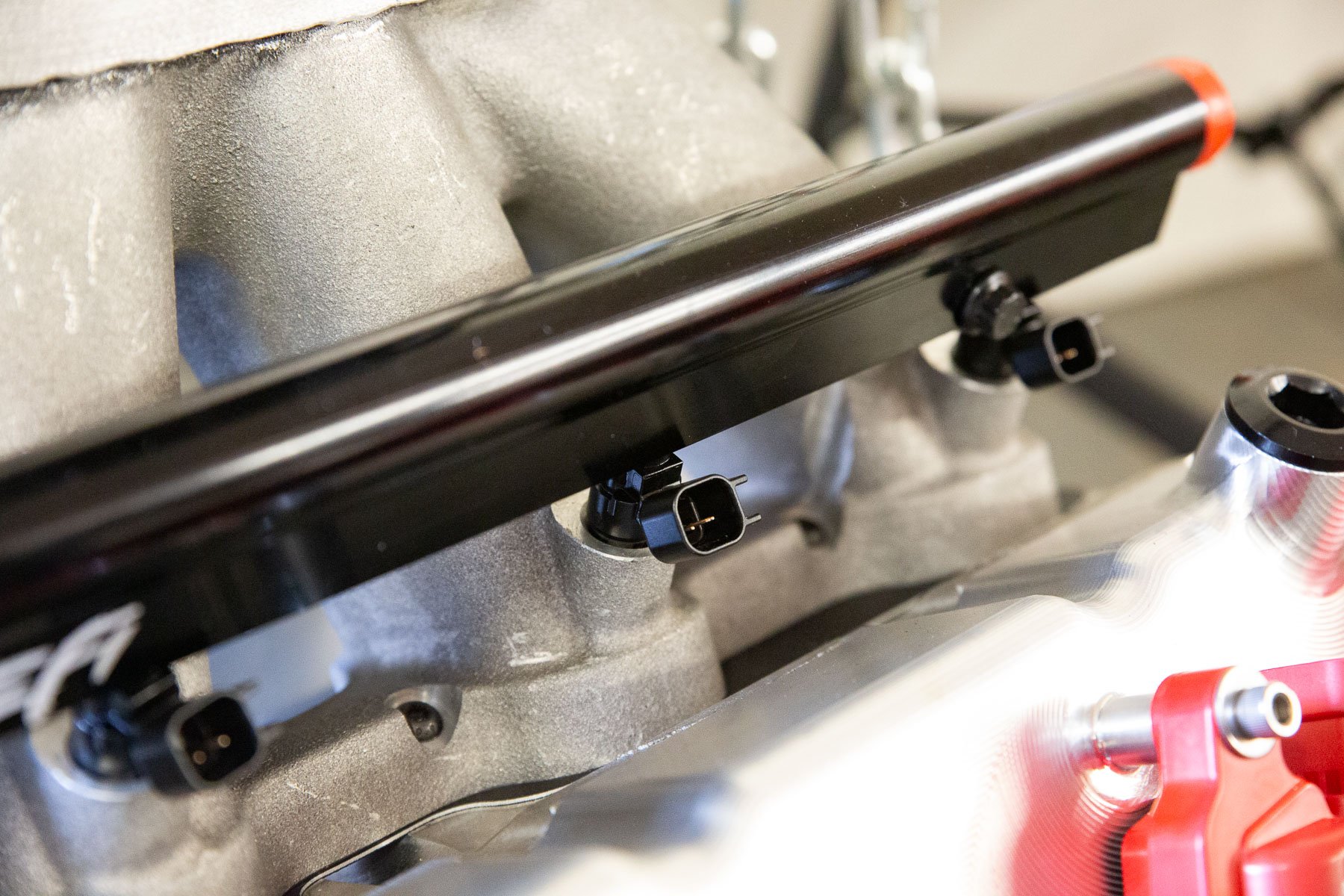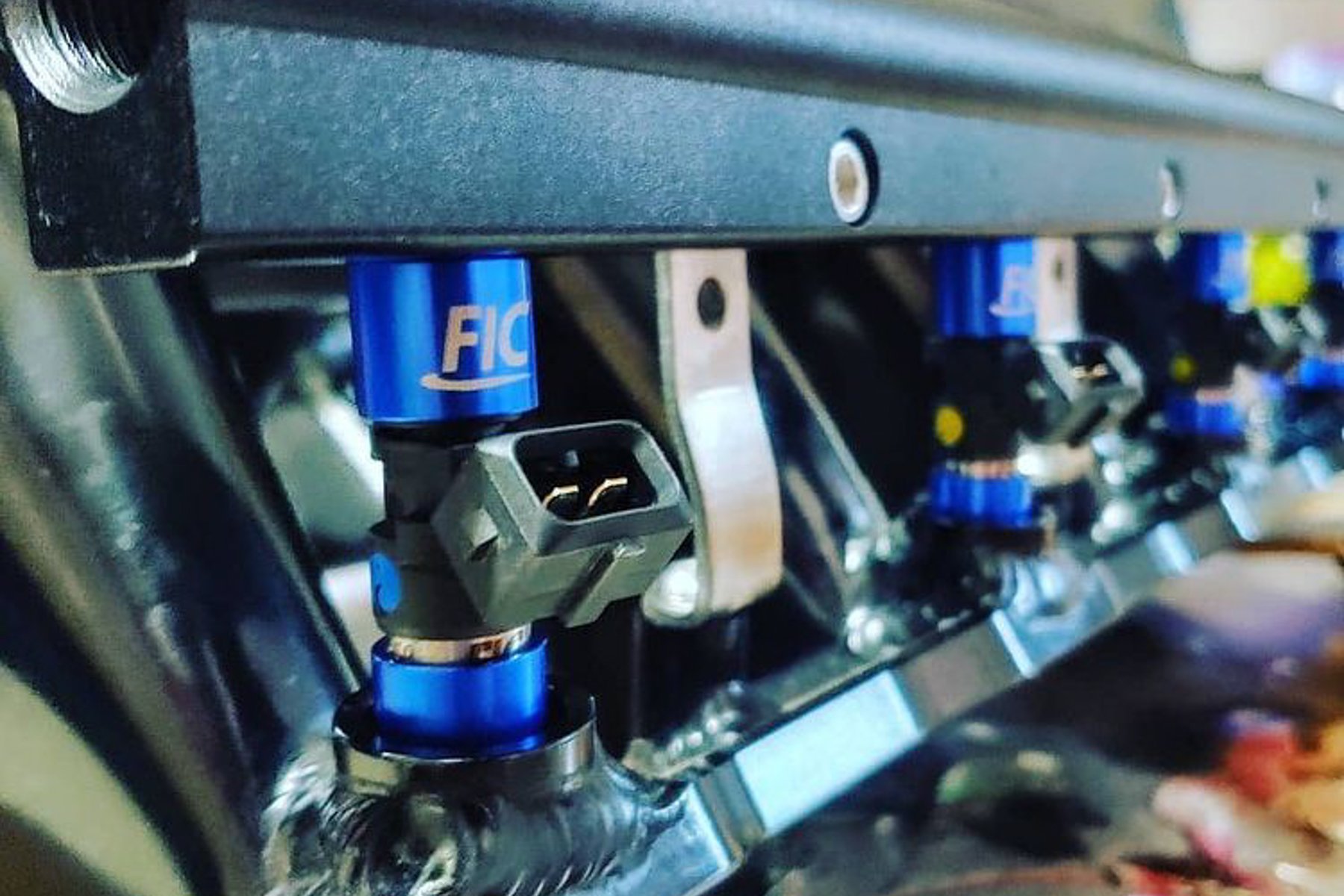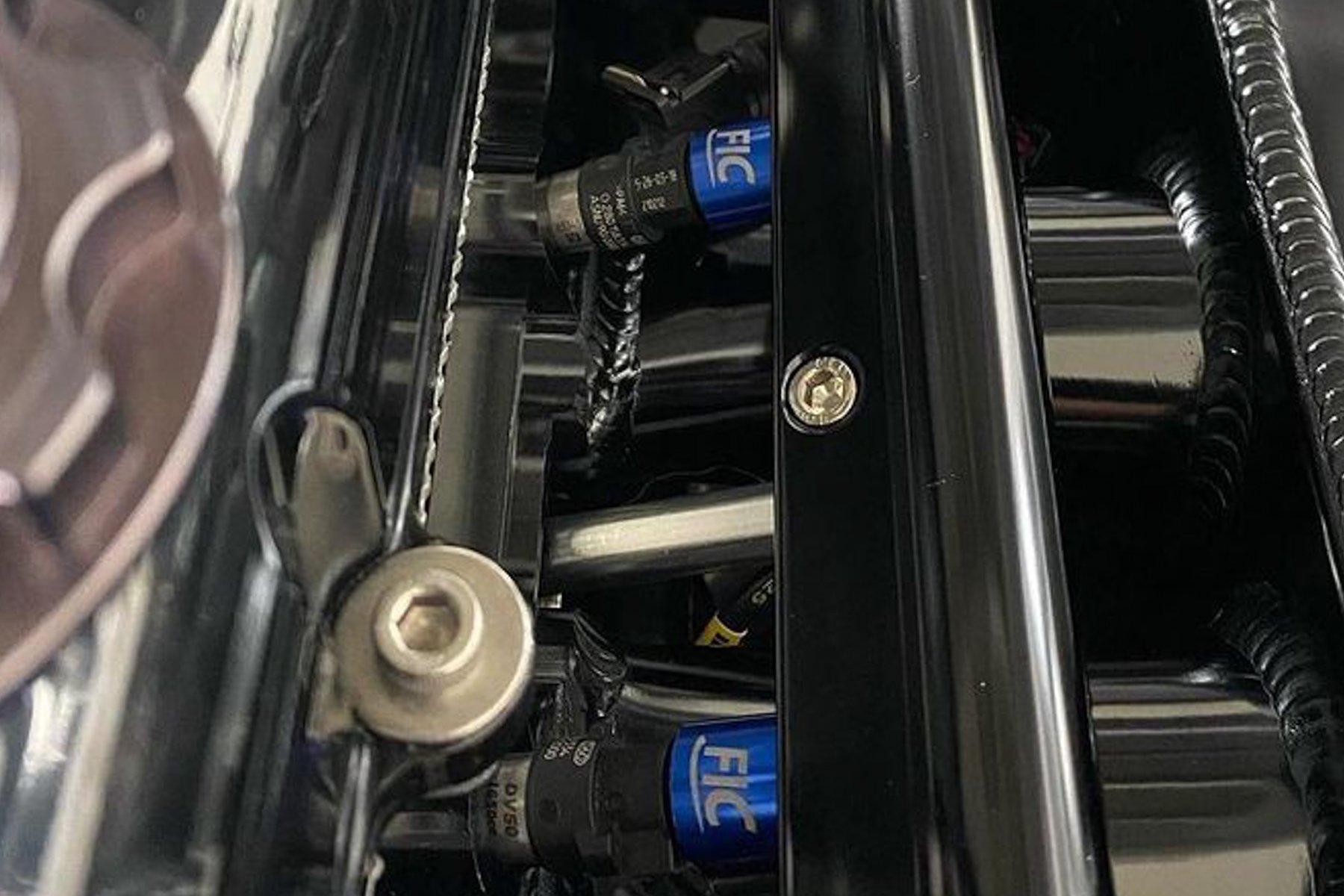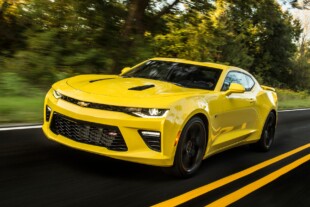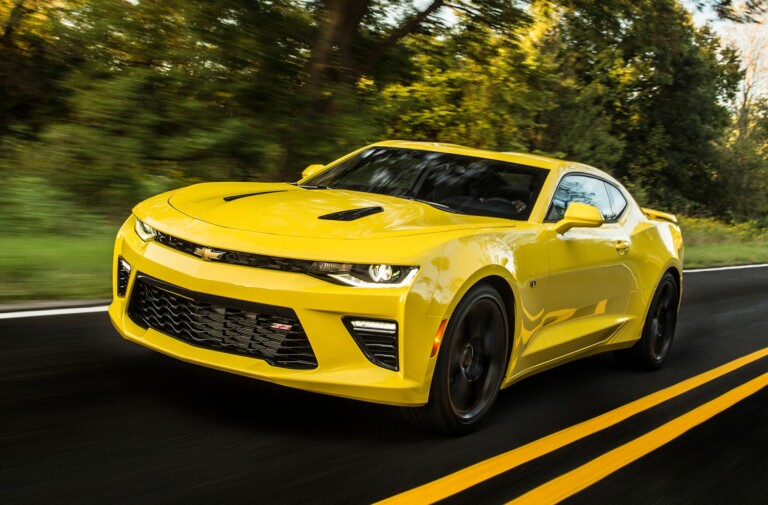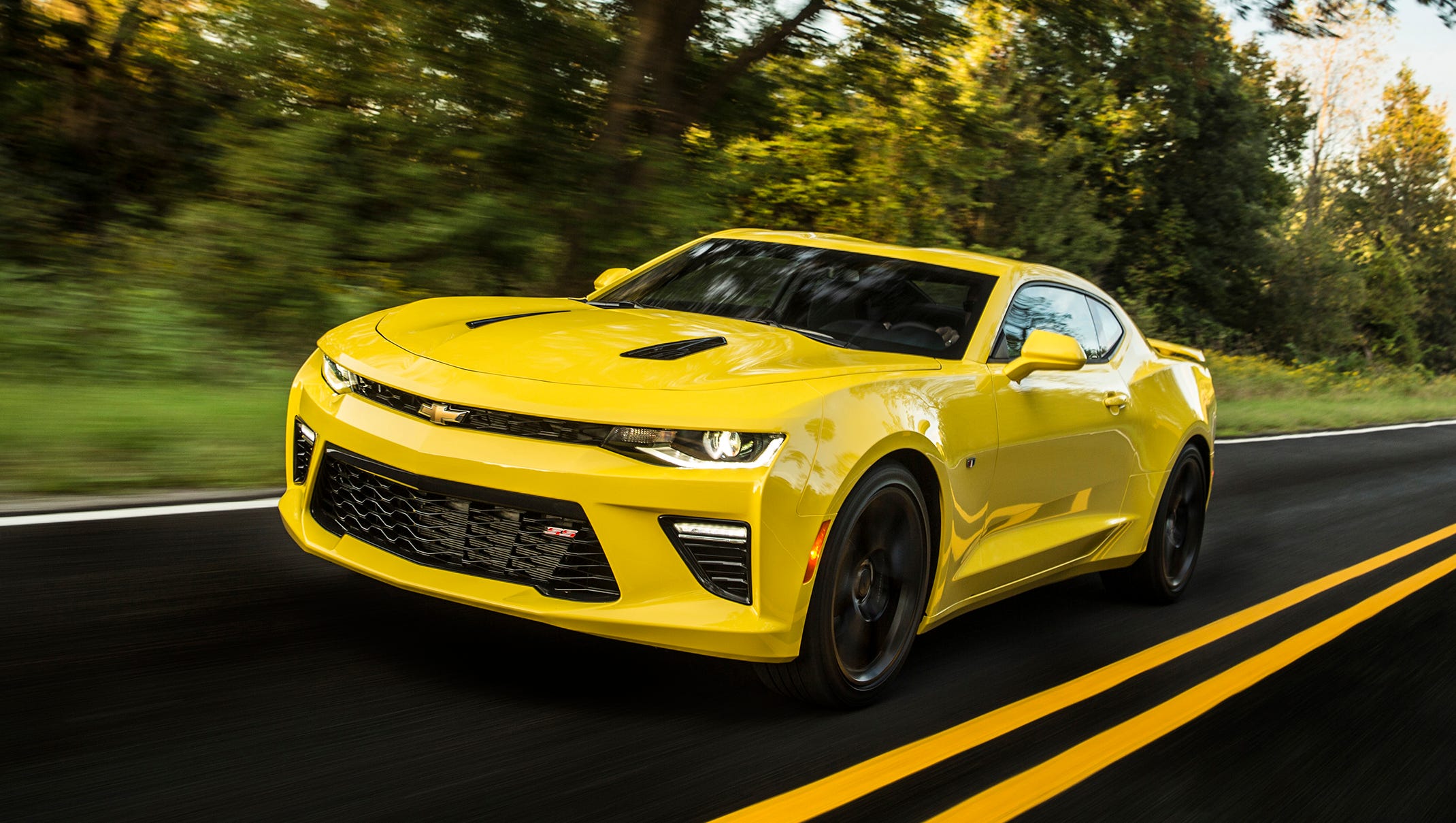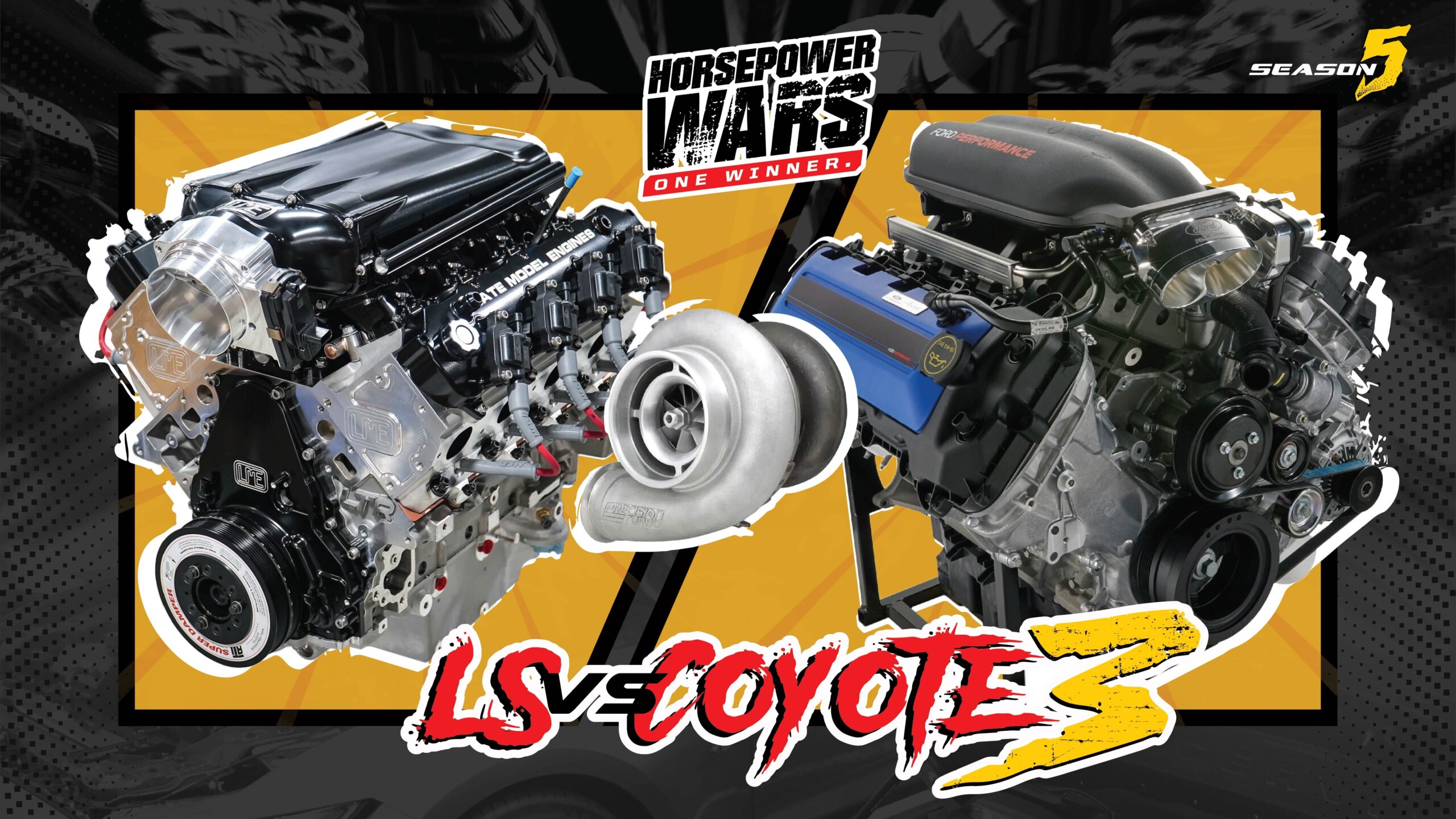A fuel system needs to be designed and built specifically for the application it will be used with…if the wrong parts are used it will lead to performance issues and other problems. Project Number Cruncher is our first foray into building a naturally-aspirated combination for bracket and index-style racing so it needs a proper fuel system. To accomplish that, we reached out to Holley and Fuel Injector Clinic (FIC) to get the right parts for our SAMTech-built 427 cubic-inch LS-based engine.
The fuel system you would use for a carbureted engine and one with EFI is very different. Our 780 horsepower LS engine is fuel injected, so it will need a higher base fuel pressure than a carbureted engine to keep the engine happy. The fuel pump, injectors, fuel pressure regulator, plumbing, and fuel filter all need to work together to supply the engine with the correct amount of fuel. If you’ve never built an EFI fuel system, this article will help you understand why you need to select certain parts and how they all work together.

Project Number Cruncher’s LS engine will need a lot of fuel to run properly in a bracket racing setting.
Moving The Fuel
There are numerous styles of fuel pumps on the market to choose from, and the most popular in high-performance applications are in-line and in-take pumps. According to Holley, you want to consider things like how much horsepower your engine will make, the type of fuel you’re going to use, how much fuel pressure you need, how you plan on filtering the fuel, and how much supply voltage you have available, when shopping for a fuel pump.
We knew going into our build the target horsepower range was 750-800 horsepower. Holley recommends you calculate the brake-specific fuel consumption (BSFC) the engine will use. The BSFC is how much fuel is consumed per the unit of power the engine produces. Our gas-burning 427 cubic-inch engine will operate in the 0.4-0.5 pounds per horsepower range. The Holley 160 GPH Dominator In-Line Billet Fuel Pump can support up to 1,600 horsepower for an EFI engine, and is compatible with race gas — this made it the perfect choice for our application.
The Holley Dominator fuel pump is the perfect match for a bracket racing application. This pump can move more than enough fuel for just about any naturally-aspirated engine package.
A fuel pump should be mounted in a convenient location that provides easy access and doesn’t force fuel lines to be routed in a way that causes them to have sharp bends. According to Evan Perkins from Holley, where you mount your fuel filters and fuel pressure regulator will require a little more planning.
“While pump placement really has more to do with the pump style, fuel filter placement is important to preserving the life of the other components in the system. For example, we recommend a 100-micron filter before the fuel pump and a 10-micron fuel filter after the pump. Switch that order and you will burn up the pump while pushing debris toward the carb or injectors. Fuel pressure regulator placement really only works one way depending on the design of the regulator. If it’s in the wrong place, your injectors or carbs will not receive the desired fuel flow.”
One of the most important things an enthusiast needs to determine is how much fuel flow they are going to need to support their horsepower goal. –Evan Perkins, Holley
Our fuel system will be using a 260 GPH Billet Dominator 100 micron pre-fuel filter before our Dominator pump, and a 260 GPH Billet Dominator 100 micron post-fuel filter after the pump. These filters use replaceable filter elements along with O-ringed inlets and outlets to prevent leaks. These fuel filters are perfect because they will catch any fuel contaminates before they get sent through the pump and to the fuel injectors.
A Dominator Billet EFI Bypass Fuel Pressure Regulator was selected to handle fuel pressure control for the EFI system. This regulator has two input/output ports, a return port, and can be adjusted from 15 to 65 psi. The regulator is designed to work with our high-pressure Dominator fuel pump and with our return-style fuel system.
Do not skimp on your fuel pressure regulator or fuel filters in an EFI build for bracket racing. These parts are critical and have very important jobs to do.
The fuel lines you select should be sized based on how much fuel you need to move, and the type of fuel you’re going to be using. There are some fuels that don’t play well with rubberized fuel lines, so that’s one thing to keep in mind.
Since we’re just using standard race gas, Mr.Gasket’s Black Nylon Braided Hose worked perfectly for our fuel system. This hose is great because it’s lightweight, and uses a fluoroelastomer inner liner that won’t break down. We’re using -12 hose for our fuel system supply line and -10 hose on the return side.
“When choosing a material for your fuel lines, you need to consider what fuel the engine will be running, and select a line that won’t corrode or degrade with that fuel. In many states, pump gas has some amount of ethanol in it, which can be hard on certain types of rubber and aluminum lines. Earl’s for example has a rating on each of its fuel hoses that shows its ability to handle different types of automotive fuels and fluids. Fuel line sizing is again going to depend on your horsepower requirements and ensuring you can physically move enough fluid to support it,” Perkins says.
Fuel line selection is just half of the battle when you’re working on plumbing a fuel system…you need to use the right fittings to connect the lines to everything. The fittings you use need to be made of high-quality material to prevent the possibility of leaks. You also want to be sure the fittings don’t neck down internally, which will restrict the fuel flow to and from your engine. The Mr. Gasket Swivel Hose Ends we are using are made from a high-quality 6061 aluminum material. These hose ends have the ability to swivel around so you can make adjustments to how the hose is routed after you’ve installed the lines.
Just like any other fuel system build, you have to pay attention to where you run your fuel lines for an EFI fuel system.
The parts you select for a fuel system are important, but you also need to put plenty of thought into how you’re going to lay out the fuel lines. The fuel pump needs to be the first thing you bolt up; after that, you’ll want t route all of your fuel lines to the engine, and this is where things can get tricky. You’ll want to have a plan before you start to build fuel lines; you need to think about where the lines will go, and you better have a way to secure the fuel lines to the chassis.
“When laying out your fuel lines, in-line pump (if so equipped), and fuel filters, the goal is to avoid anything sharp, potential points of contact with the ground, and anything hot (exhaust), or in motion (driveshaft). Utilize solid mounting solutions such as adel clamps, and make sure that no part of the fuel line is unsupported,” Perkins explains.
Fittings are another place where you want to make sure you're spending the money on good parts.
Your fuel system isn’t going to assemble itself, no matter how much you wish it would. The right tools and techniques will make putting everything together much easier. This means you’ll want to invest in a few things and do some research on the best ways to assemble hoses and fittings.
“AN fittings and hose-ends are made of anodized aluminum, and steel tools can scuff that anodization. Aluminum AN wrenches help to protect the fitting surface. When it comes to assembling lines and hoses, most Earl’s products do not require a custom tool. If you have access to a band saw with a fine-tooth blade, that works excellent and makes cutting the fuel hose easier. However, a cut-off wheel or a hacksaw also does a good job. Always wrap the portion of the hose to be cut with electrical tape before cutting to prevent the strands from unraveling,” Perkins says.
Delivering the Fuel To The Cylinders
The fuel pump, filters, regulator, fittings, and hoses you select for an EFI application in drag racing are just part of the fuel system equation — the other key component is the fuel injectors. The injectors need to be able to deliver the proper amount of fuel and be compatible with the type of fuel you’re using. We worked with Jens Von Holten at Fuel Injector Clinic (FIC) to get the right injectors for our engine. Von Holten looked at every aspect of our engine build and determined a set of 850cc (94 lb/hr) FIC injectors would get the job done.
The first thing to know before selecting injectors is the fuel type. Each fuel has different characteristics when it comes to how it atomizes and burns in the cylinder. That’s why it’s important to use an injector that’s compatible with the fuel, and will be able to move enough of it to keep your engine happy.
“Different fuel types require different size injectors. E85 requires about 30-percent more flow than pump gas for the same horsepower; methanol needs injectors twice the size of pump gas. So, knowing what you are planning to use for fuel will certainly influence the injectors you buy. Additionally, larger injectors are harder to control than smaller injectors, and some injectors are incompatible with certain fuels, so you may find that your decision on the type of fuel you’re planning to use may be influenced by the type of driving you intend to do with the vehicle and the injectors available in the market,” Von Holten says.
Having the right size fuel injectors are just part of the battle when building an EFI system for bracket racing.
You have to keep your application in mind when evaluating which injectors to use for an EFI engine. Naturally-aspirated engines operate under a different set of rules compared to engines that use a power adder. The naturally-aspirated engines will require less fuel for the most part and will use different fuels up to a certain horsepower level.
“In general, the injectors for N/A engines are of very similar construction to the ones you’d use on an engine with a power adder until you get to the 1,500 horsepower range. The advantage you have when staying N/A is that you generally need smaller injectors, which can be matched very well and provide excellent fueling control. The smaller injectors are also mostly compatible with all types of fuel, so you don’t have to deal with some of the maintenance that the larger injector crowd needs to do,” Von Holton explains.
The Do’s And Don’ts Of Drag Racing Fuel Injectors
You’re going to have a lot to think about when the time comes to select fuel injectors for an EFI build that will be used in a drag racing application. We’ve covered the basics so far, but now we’re going to look at some important points you’ll want to keep in mind.
According to Von Holton, the first thing you’ll want to do is make sure you’re buying the injectors from a reputable company. This goes beyond just the part and its price…you’ll want to work with a company that will have someone you can actually talk to in case you need help.
In general, the injectors for N/A engines are of very similar construction to the ones you’d use on an engine with a power adder until you get to the 1,500 horsepower range. – Jens Von Holton, Fuel Injector Clinic
Size is everything in the world of fuel injectors; you have to make sure the injectors you select are aligned with your horsepower goals, plus a little extra just to be safe.
“FIC has some great calculators on our website with suggested links to FIC injectors that would satisfy your power goals. You don’t want to cut it too close with your injector size. A best practice is to leave yourself 10-20 percent headroom, so you don’t run lean and ruin your engine when you turn it up on raceday. That headroom is something that many people fail to take into account and it will come back to bite you,” Von Holten states.
Fuel injectors run off the commands provided by the engine’s ECU and what the tuner inputs into the ECU. The tuner or ECU can’t do their job if they don’t have the right information for the injectors. You can make everyone’s job easier by purchasing injectors that have plenty of data available on how they operate. You’ll want injectors that come with information about their voltage offset values, injector offset matching data, and other specs. This information will make tuning the engine much easier and prevent any issues.
You want to use injectors that are designed for the type of fuel you'll be running.
Your injectors need to have flow rates that are matched as closely as possible to each other. The flow rate of each injector is important because it dictates how much fuel goes into the cylinder.
“Tight matching injectors for both flow size and offset is the only way your cylinder to cylinder fueling will be equal. You have tight tolerances in all sorts of other areas of your engine build and injectors are no different. A good idle and cruising is only achieved with a tight matching of your entire injector set. You can chase a short pulse width misfire until you’re blue in the face if your set isn’t matched for offset,” Von Holten explains.
One mistake people make when buying injectors for a build is going too big. Like so many other things in life, bigger isn’t always better, and using injectors that are too big will lead to tuning issues.
“There are significant challenges to making big horsepower, and smaller injectors can help with creating that horsepower because they provide better fueling control. Injectors are quite durable…if you need to sell them one day, send them into FIC for a service and we will make sure they are in good, clean condition. You can then sell them for a decent return because there’s always a guy starting out where you were a while ago who will be in the market for injectors. This will help make sure you’ve got the right sized injectors for your build and haven’t gone too big,” Von Holten states.
Fuel injectors differ from carburetors in the durability realm. A carburetor won’t be negatively affected nearly as much by debris as a fuel injector will. People make the mistake of not putting enough protections in place to make sure their injectors stay debris-free, and that’s just asking for trouble.
“Make sure you understand the effect of the fuel you are using on all of your fuel system components so you can keep a good maintenance schedule. This will ensure that all of your systems are clean and operating properly. Running lean because of debris from issues in the tank, hoses, or pump that ended up in the injector are common issues blamed on the injectors that are actually found upstream. We frequently send customers pictures of what we found in the injector filter baskets after an engine failure,” Von Holten says.
As you can see, it’s relatively easy to build your own EFI fuel system for a drag racing application. You just need to make sure that you’ve done your research upfront so you can go out and purchase the right parts for the job. Just like any other fuel system, it’s about making sure you’re flowing enough fuel for your horsepower level and the parts you select are up to the task.
You can follow Project Number Cruncher’s progress right here on Dragzine as we work on getting our powerful Pontiac ready for the track.


